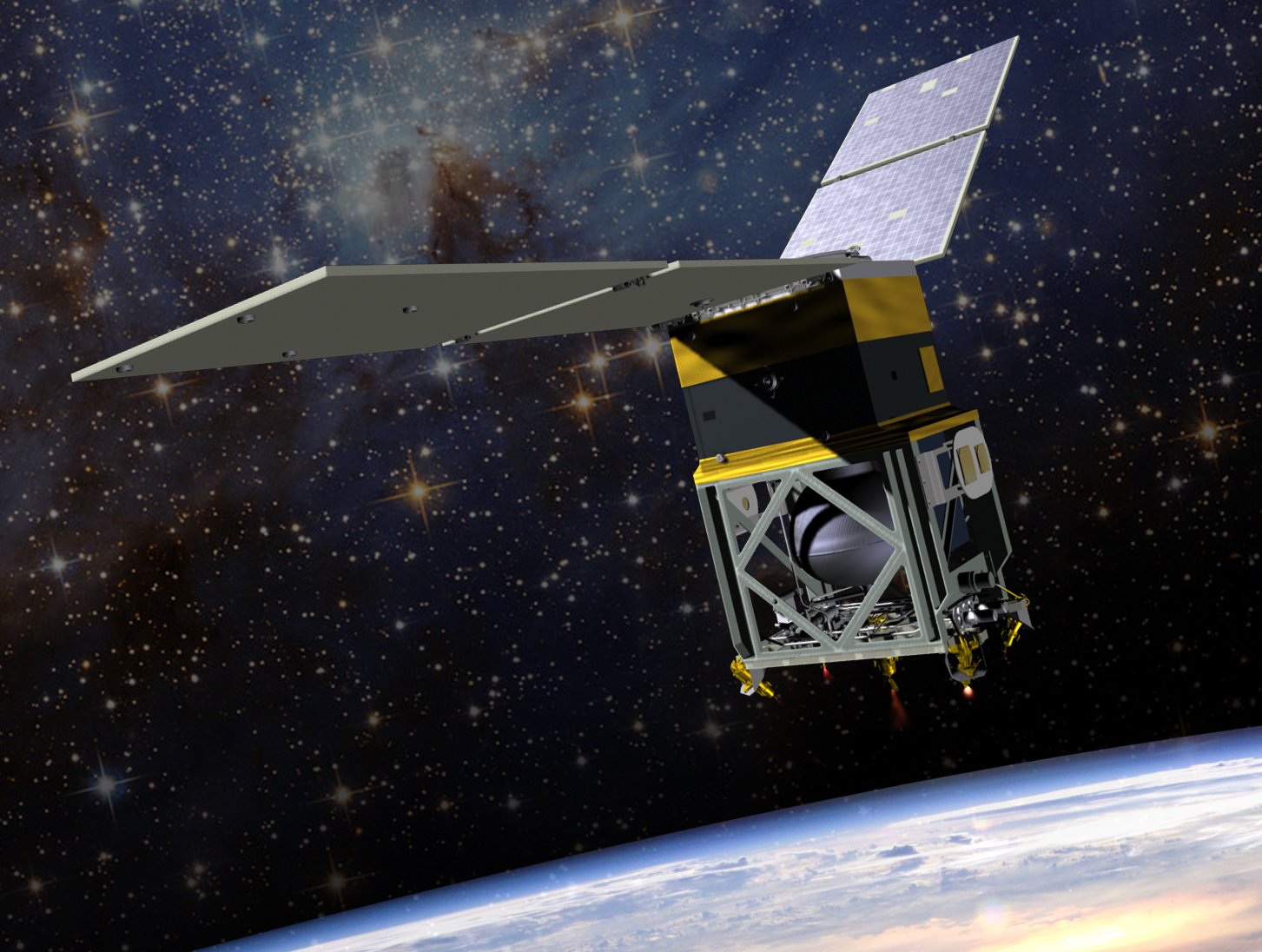NASA’s Green Propellant Infusion Mission (GPIM) demonstrates a “green” alternative to conventional chemical propulsion systems for future spacecraft. The technology demonstration mission seeks to improve overall propellant efficiency, while reducing the handling concerns associated with the toxic fuel hydrazine. GPIM also strives to optimize performance of new hardware, systems and power solutions while ensuring the best value for investment and the safest space missions possible.
GPIM launched to low-Earth orbit June 25, 2019, aboard a SpaceX Falcon Heavy rocket. The mission is led by Ball Aerospace for NASA.
Throughout the expected mission duration of 13 months GPIM is demonstrating the practical capabilities of a hydroxyl ammonium nitrate fuel/oxidizer blend, called AF-M315E. This innovative, low-toxicity propellant was developed by the U.S. Air Force Research Laboratory at Edwards Air Force Base, California. GPIM is testing the fuel and compatible propulsion system in space for the first time. Researchers conduct orbital maneuvers to demonstrate the performance of the propellant during attitude control maneuvers, changes in orbital inclination and orbit lowering.
NASA and its partners maintain strict safety standards for storage, transport and use of space propellants. While all rocket fuels can be dangerous to handle without the proper safety precautions, AF-M315E has significantly reduced toxicity levels compared to hydrazine, making it easier and safer to store and handle. It also requires fewer handling restrictions and potentially shorter launch processing times, resulting in lowered costs.
AF-M315E is also expected to improve overall spacecraft performance. It boasts a higher density than hydrazine, meaning more of it can be stored in containers of the same volume. In addition, it delivers a higher specific impulse, or thrust delivered per given quantity of fuel, and does not require heater power to prevent freezing. Like the GPIM spacecraft itself, these advantages are appealing for small satellites. Larger spacecraft can also benefit from GPIM technology.
Once proven in space, the GPIM team will present AF-M315E as well as the compatible tanks, valves and thrusters to NASA and the commercial spaceflight industry as a viable, effective solution for future missions.
The GPIM team includes Ball Aerospace; Aerojet Rocketdyne of Redmond, Washington; the Air Force Research Laboratory; the Air Force Space and Missile Systems Center at Kirtland Air Force Base, New Mexico; and three NASA field centers: NASA’s Glenn Research Center in Cleveland, NASA’s Goddard Space Flight Center in Greenbelt, Maryland, and NASA’s Kennedy Space Center in Cape Canaveral, Florida. GPIM is sponsored by NASA’s Space Technology Mission Directorate.
Contact
Clare Skelly
Headquarters
Washington
202-358-4273
Chris McLean, Principal Investigator
Ball Aerospace & Technologies Corp.
303-939-7133


























